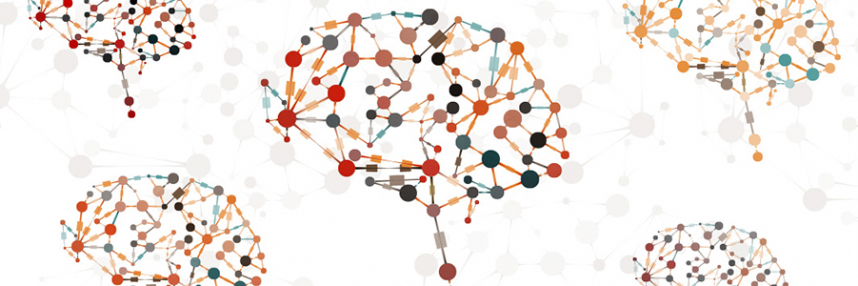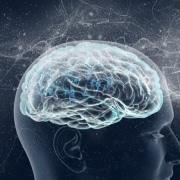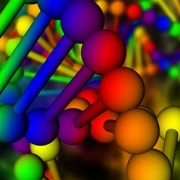Consciousness and the ‘brain-in-a-dish’
Could advances in genomics help neuroscientists reveal more about the power of the human brain?
Despite continued research in the neurosciences, the complexity of the human brain is far from being understood. Could a genomic approach prove beneficial in unlocking the secrets of consciousness? “We have made some progress since 1979, but the core puzzle remains to be solved”, says Professor Alain Li Wan Po.
Francis Crick’s last challenge
In 1976, when the Salk Institute in the US offered Nobel laureate Francis Crick a fully endowed appointment that allowed him complete freedom on research topic, he resigned from the Medical Research Council laboratory in Cambridge and moved to La Jolla, California.
Crick had a long-standing interest in the phenomenon of consciousness ever since 1947, during the days when was thinking of leaving the Civil Service. In his new post he focused his considerable intellect towards unravelling the molecular secrets of the brain and the phenomenon of consciousness. Given his record of innovative thinking in molecular biology, the editors of Scientific American asked him to comment on neurophysiological research. “Reflecting on itself”, he said in 1979, “the human brain has uncovered some marvellous facts. What appears to be needed for understanding how it works is new techniques for examining it and new ways of thinking about it.”
Consciousness and the claustrum
Although Crick tried hard over the subsequent three decades, right up to his death in 2004, he made no major breakthrough in the neurosciences. Given that consciousness is the integration of signals from different parts of the brain, Crick suggested, with his colleague Christof Koch, that there must be a brain centre that performed the integration. “When holding a rose, you smell its fragrance and see its red petals while feeling its textured stem with your fingers”, they said. Consciousness “must involve some form of cooperative activity”, and in the very last paper Crick authored, he proposed that the integrating centre could be a small ‘hidden away’ (from the Latin, claustrum) region of the brain under the cortex. Crick suggested that a study of gene expression in the different areas of the brain sending signals to the claustrum would be informative.
Crick and Koch’s search for the integrating centre reminds us of the frantic debates about the location of the soul during the classical period. Plato thought that the soul was in the brain, and Aristotle, in the heart. In a dramatisation of the search for the soul, Dr Botkin, court physician to Russian Tsar Nicholas II, bemoaned that he had “performed many autopsies” in his time but, “had yet to find a soul”, to which the infamous Rasputin retorted: “How many memories and emotions have you found?” For some, the soul was spiritual and immortal and for others, material and mortal.
Progress in the neurosciences
If the search for the soul and the meaning of consciousness remain as tough as ever, the neurosciences and the molecular neuroscientists have not stood idle. With real-time dynamic imaging systems and with the help of exquisitely specific monoclonal antibodies, brain function, dysfunction and degeneration have been and continue to be probed in great detail. It is hoped that such investigations will lead to tools for early diagnosis and effective interventions to slow or arrest disease progression – even if they do not lead us any closer to the soul. Optimists even suggest that perhaps cures of neurodegenerative conditions such as Alzheimer’s and Parkinson’s diseases might be possible.
Model systems and ‘mini-brains’
The history of genomics has taught us that creating simple models of complex biological systems to study can be critical to major scientific breakthroughs. The original identification of DNA as the essential hereditary material came through a study of bacterial cells. The function of genes and the impact of genetic mutations became clear through studies of natural and x-ray induced mutations in the fruit fly. Studies of the Neurospora fungus contributed key insights into the expression of genes into proteins, and studies of the humble worm were crucial to understanding pathways in cellular development and more recently, the study of microbial immunity to the emergence of ground-breaking technology for gene-editing.
Over recent weeks, headlines in the popular press have highlighted the generation of useful model cellular culture systems for laboratory investigations of brain function. While the hype has referred to these aggregates of neurons as ‘brains-in-a dish’ or ‘mini-brains’, we are still very far from being able to create systems that mimic brain function in the sophisticated, highly integrated form that Crick imagined. This is perhaps just as well, since it would undoubtedly raise major ethical issues. Investigators of similar, more humble model systems have used terms such as ‘neural constructs’ and ‘cerebral organoids’ instead. Maxwell Cowan, an expert in brain function writing in the same 1979 Scientific American issue to which Crick contributed, commented: “As the human brain develops in utero it gains neurons at the rate of hundreds of thousands a minute. One problem of neurobiology is how the neurons find their place and make the right connections.”
Science fiction to science fact
Despite the slow progress towards understanding consciousness at the molecular level, what has been achieved deserves celebration. The development of the latest model systems for studying brain function required reprogramming of skin cells to create pluripotent cells (with the potential to form other cell types) and then directing these to form nerve cells. Such cellular reprogramming, made possible by detailed understanding of gene expression, was the stuff of science fiction not so long ago, but in 2012 was recognised with the award of the Nobel Prize in Physiology of Medicine to Sir John Gurdon and Shinya Yamanaka. With the power of the human brain, anything seems possible – even mimicking and understanding the brain itself.
Professor Alain Li Wan Po is editor-in-chief of the Journal of Clinical Pharmacy and Therapeutics, and is a fellow of the Royal Pharmaceutical Society and the Royal Statistical Society.
–









